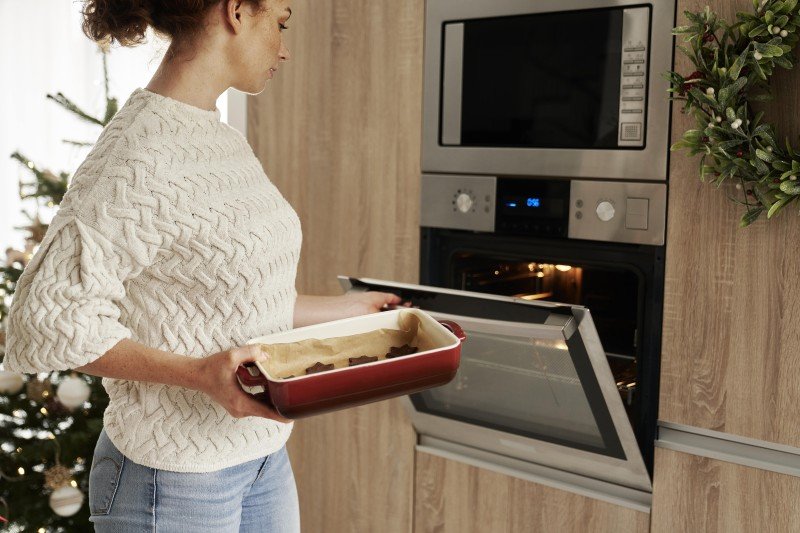Understanding Hobs and Ovens: A Comprehensive Guide for Cooking Enthusiasts
The kitchen is typically concerned as the heart of the home, where cooking productions come to life. Two vital elements of any kitchen are the hob and the oven. While they are both important for food preparation and cooking, numerous property owners might not totally understand the differences, functionalities, and numerous types readily available in the market today. In this short article, we will explore these home appliances in information, assisting you make notified decisions for your cooking needs.
Tabulation
- What is a Hob?
- 1.1 Types of Hobs
- 1.2 Benefits of Different Hob Types
- What is an Oven?
- 2.1 Types of Ovens
- 2.2 Benefits of Different Oven Types
- Selecting the Right Hob and Oven for Your Kitchen
- Regularly Asked Questions (FAQs)
- Conclusion
What is a Hob?
A hob, frequently called a cooktop, is a cooking surface area that you place pots and pans on to prepare food. It includes a series of heating components and is frequently set up on countertops. In modern-day kitchens, hobs can be found in numerous styles, technologies, and performances.
1.1 Types of Hobs
There are a number of kinds of hobs available in the market:
| Type | Description |
|---|---|
| Gas Hob | Uses gas burners for cooking, offering accurate temperature control. |
| Electric Hob | Operates using electrical heating components, frequently seen in solid or radiant kinds. |
| Induction Hob | Uses electromagnetic fields to heat pots and pans directly, promoting energy efficiency. |
| Ceramic Hob | Functions a smooth glass top, making use of electric coils underneath the surface area. |
| Strong Plate Hob | Standard electric hobs with exposed metal plates that warm up. |
1.2 Benefits of Different Hob Types
Gas Hobs:
- Quick heating & cooling.
- Visual flame control for accurate cooking.
Electric Hobs:
- Even heating; perfect for simmering and boiling.
- Easy to clean, especially flat surfaces.
Induction Hobs:
- Energy-efficient as only the pot heats up.
- Safety features, such as automated shut-off.
Ceramic Hobs:
- Attractive visual appeals with a smooth surface.
- Even surfaces for easy cleansing.
Strong Plate Hobs:
- Cost-effective and long lasting.
- Helpful for basic cooking requirements.
What is an Oven?
An oven is a kitchen appliance utilized for baking, roasting, and broiling food. Ovens can be standalone systems or built into kitchen cabinetry, providing different cooking techniques that can boost or transform components.
2.1 Types of Ovens
Comparable to hobs, there are several types of ovens, each with its advantages:
| Type | Description |
|---|---|
| Traditional Oven | Runs with heating components, best for baking. |
| Stove | Uses fans to distribute hot air, cooking food uniformly and quickly. |
| Microwave | Cooks food utilizing electro-magnetic radiation; suitable for reheating. |
| Steam Oven | Makes use of steam to cook food, maintaining wetness and nutrients. |
| Wall Oven | Built into the wall, offering convenience and visual appeal. |
2.2 Benefits of Different Oven Types
Standard Ovens:
- Simple to use without any complex settings.
- Versatile for numerous cooking approaches.
Convection Ovens:
- Faster cooking times due to air flow.
- Improved browning and crisping for baked items.
Microwave Ovens:
- Quick cooking or reheating of food.
- Energy-efficient for low-volume cooking.
Steam Ovens:
- Health-conscious cooking that retains nutrients.
- Exceptional for baking bread and cooking vegetables.
Wall Ovens:
- Convenient placement; saves area.
- Less bending required to access cooking meals.
Selecting the Right Hob and Oven for Your Kitchen
When choosing a hob and oven, factors such as area, cooking design, and individual choices ought to be thought about. Here's a basic guide to help you choose:
Factors to Consider
- Cooking Needs: Evaluate your cooking routines. Do you typically bake, or is stovetop cooking more prevalent?
- Area Availability: Measure your offered kitchen area. Some hobs or ovens might need more room than others.
- Fuel Type: Decide between gas and electric, based upon schedule and personal choices.
- Budget: Determine what you're ready to invest and discover alternatives within that range.
Quick Tips
- Prioritize Efficiency: Look for energy-efficient designs to reduce long-term costs.
- Check out Reviews: Explore user reviews to collect opinions on performance and dependability.
- Speak with Professionals: Seek suggestions from kitchen style experts when preparing your design.
Regularly Asked Questions (FAQs)
1. What is the distinction in between a hob and an oven?
A hob is a cooking surface area generally for stovetop cooking, while an oven is an enclosed space utilized for baking, roasting, and broiling food.
2. Can I use any pot on an induction hob?
No, induction hobs need magnetic pots and pans. Stainless-steel and cast iron pots work, but non-magnetic materials like aluminum will not.
3. How do Online Cooker Sales differ from traditional ovens?
Stove utilize fans to distribute hot air for even cooking, whereas traditional ovens do not have this feature.
4. Is it possible to have both a hob and oven as a single system?
Yes, there are range cookers that incorporate a hob and an oven within one appliance, using a thorough cooking solution.
5. How do I clean my hob and oven?
Most hobs and ovens have advised cleaning methods depending on their materials. It is advisable to speak with the manufacturer's instructions for the best practices.
Comprehending the distinctions between hobs and ovens is important for anybody looking to enhance their kitchen space or improve their cooking skills. By knowing the different types, their advantages, and how to select the best ones for your requirements, cooking can become a more pleasurable and effective experience. Whether you are a knowledgeable chef or a beginner cook, the best combination of hob and oven can raise your culinary developments to brand-new heights.

